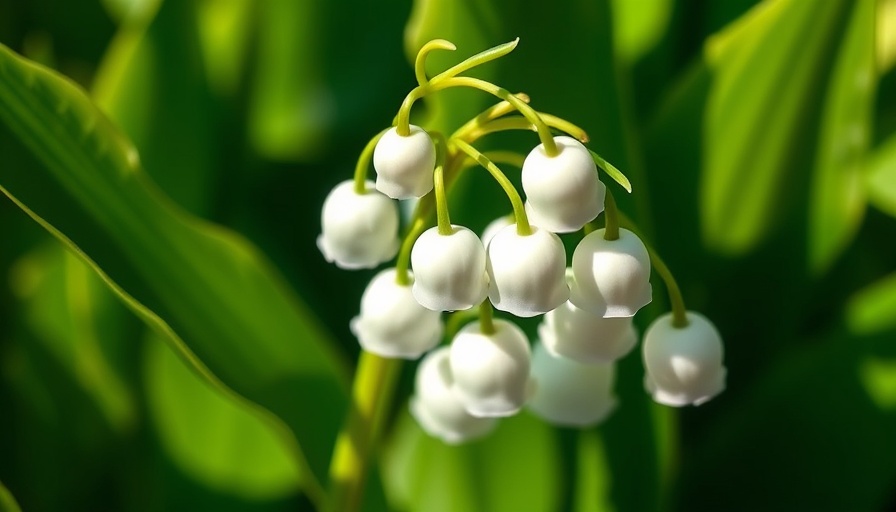
Discovering the Charm of Lily of the Valley
The delicate scent of lily of the valley has a distinct way of enchanting those who encounter it. This herbaceous flowering perennial, known botanically as Convallaria majalis, truly captivates with its fragrance, pulling you into the serene woodlands where it thrives. In spring, it reclaims its territory, signaling the start of warmer months with a cascade of small, white, bell-shaped flowers that hang gracefully from lush green leaves. Yet beyond its beauty and aroma lies a tougher side; without the right care, lily of the valley can become a vigorous spreader, potentially overwhelming your garden.
Planting: A Foundation for Success
For successful growth, planting lily of the valley requires thoughtful planning. Ideally, these plants should be nestled in rich, moist soil that mirrors their native woodland habitat. A preferred pH of 6.0-6.5 ensures they thrive, offering a slightly acidic environment that fosters healthy growth. Plant them in clusters to create a lush look, bearing in mind their mature height of 12-22 inches. Spacing these beauties correctly is crucial; a well-placed barrier can help manage their spread while preserving their charming reputation. While fall planting is recommended for spring blooms, understanding proper depth and spacing will yield a thriving patch that you can enjoy for years to come.
Care Tips to Ensure Vibrant Growth
With a bit of vigilance, maintaining lily of the valley is simpler than one might think. These plants thrive best in partial to full shade, where they can avoid the harsher rays of the sun that might wilt them. Their moderate water needs mean that keeping the soil moist, particularly during drier spells, will support blooming without the risk of drowning their roots. It's important to monitor these plants for any signs of pests or disease, notably the lily leaf beetle, which can feast on their tender foliage. By incorporating organic gardening practices, such as natural pest deterrents and routine inspections, you can nurture a healthy environment for your plants.
The Joy of Landscaping with Lily of the Valley
Integrating lily of the valley into your garden design has profound aesthetic and practical benefits. Their low-maintenance nature makes them an ideal addition to various garden styles—from quaint cottage gardens to more structured landscapes. When considered in conjunction with other garden plants, they can serve as a beautiful front or backyard border, drawing the eye and encouraging exploration through varied garden paths. Moreover, these plants are environment-friendly, attracting helpful pollinators like bees and butterflies while offering dense greenery that can help block out undesirable weeds. Whether planted en masse or used sporadically throughout a flower garden, lily of the valley adds an invaluable charm and elegance.
Managing Growth: Benefits and Challenges
While the musky floral scent and mesmerizing appearance make lily of the valley a desirable addition to many gardens, their invasive qualities require management. This means a commitment to regularly monitoring their spread and potential for overcrowding. Employing methods such as division or planting barriers can help control their growth, ensuring they remain a pleasing part of your garden rather than an uncontrollable force. As you cultivate these beautiful plants, it is essential to create a care routine that balances their natural tendencies with your garden aesthetic and maintenance capabilities.
In Summary: Embracing the Adventure of Gardening
Growing lily of the valley, much like any gardening endeavor, invites a blend of patience, excitement, and creativity into your life. These lovely plants not only enhance the beauty of your garden with their delightful blooms and fragrance but also offer valuable lessons in care and landscaping through their unique requirements. By taking the time to plan, plant, and manage these charming perennials, you’ll cultivate a garden that reflects your personal touch while harmonizing with nature. So, strap on those gardening gloves and embrace the lush journey that awaits you in your very own flower garden!
 Add Row
Add Row  Add
Add 




Write A Comment